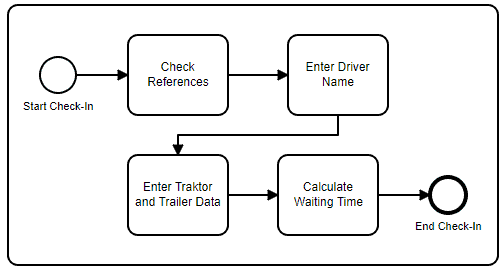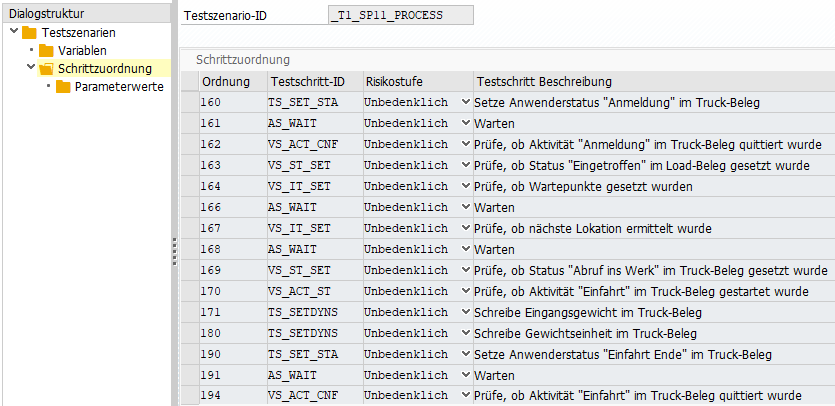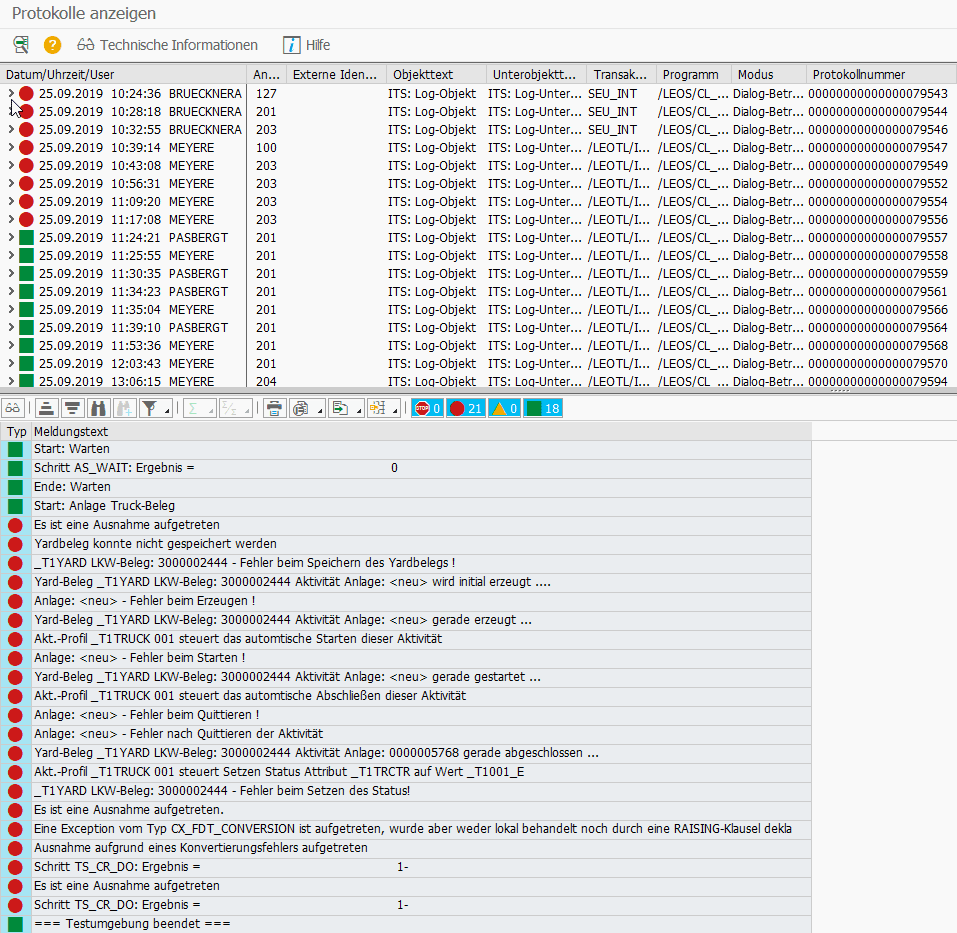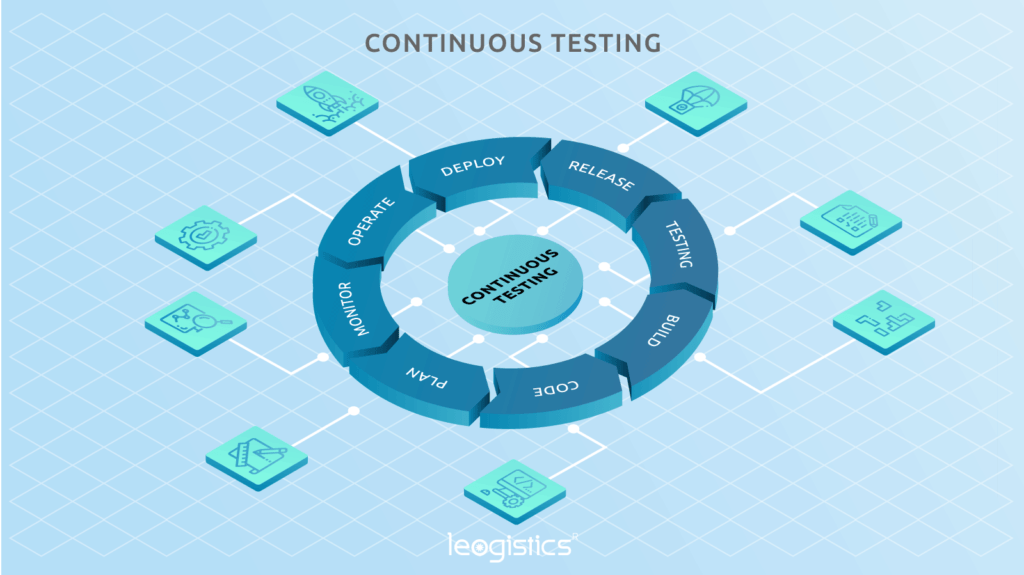Perform regular checks for your sap supply chain execution solution
„With testing one can always only prove the presence, but never the absence of errors.“
Edsger Wybe Dijkstar (1972)
Everyone who regularly tests software agrees with this quote. Nevertheless, there are ways to minimize the probability of errors: These include the use of extensive test plans, increasing the test volume and the use of sophisticated test software.
The challenges of an error-free running application lie not only in the pure coding – they are also influenced by the defined process, the configuration and the specification. In order to avoid side effects, it must be ensured that the system behavior is not only fully documented, but also that it continues to function when changes are made.
The following section examines the significance of automated testing in the SAP environment. What tools are there? How can you check your individually configured logistics software in case of upgrades with as little effort as possible?
The focus should be on sustainable quality assurance
Our experience from customer projects shows that due to constantly changing requirements, externally specified release cycles and shorter development phases, sustainable methods for quality assurance is becoming more and more important. Errors that occur, for example, due to side effects after upgrades have been installed or due to the deployment of further software artifacts, are errors that are rarely foreseeable. Errors of this kind cause great damage during operation. For this reason, the specified software properties should be ensured by continuous testing already during development and an automated infrastructure in order to detect malfunctions at an early stage. The importance of the topic of automation was also reflected in this year’s keynote of the DSAG Technology Days 2019 as the main topic.
What is a software test?
If you would like to define what constitutes a complete software test, the following description from Pol, Koomen & Spillner applies best: A software test is a
- „process of planning,
- preparation and
- of the measurement, with the goal to
- determine the characteristics of an IT system and
- to show the difference between the actual state and the required state.”
Process of planning
In the leogistics Integrated Test Suite (ITS), the process – in this case the scenario – is put together by placing the individual steps in the desired sequence so that the business process to be tested can be executed.

Preperation
Once the steps have been put in the appropriate sequence, they are filled with the necessary parameters. The parameters consist either of fixed values or variables.

Measurement
After all steps have been filled with the appropriate parameters, the scenario is executed. The leogistics ITS simulates all steps that a user would perform (test step) and compares the state of the system with the expectations (verification steps) of the tester.

Characteristics of the it system
Once the scenario has been executed, the application log displays the result of the test. Right in the top line, the user can see at a glance whether the test was successful or not, and whether the system meets the expectations.

Deviations of state
If the test generates an error message, individual steps can be examined more closely in order to implement a future error-free scenario.
Automation creates space for digitization
Continuous testing leads to success especially when it is an essential part of the development process.

Supported by the targeted use of test methods or test frameworks, including test automation, the necessary effort can be kept to a minimum.
The flexible creation and maintenance of test scenarios is mandatory.
The software life cycle can be improved by:
- the mapping of business processes as modular and reusable components
- best practices
- Tools such as monitoring solutions, configuration management or tools for Continuous Integration/Delivery
Overview - test software on the market
| What does SAP do? | With eCATT (Extended Computer Aided Test Tool), SAP has provided a powerful tool for creating and performing function tests for years. With this tool, SAP business processes can be tested automatically, as long as the SAP system is configured accordingly. The creation of test scripts can range from a simple recording of user actions (SAP GUI or WebDynpro) to a complex variant with additional ABAP scripts. SAP Solution Manager includes a comprehensive test suite that customers can use to establish test management. Starting with the documentation of the system and the planning and creation of a test concept, manual and automated tests can be managed. Component-based Test Automation (CBTA) is available as of SAP Solution Manager 7.1 SP7. In addition to classic SAP UI technologies, UI5-based applications can now also be tested component-based with this add-on. |
| What other solutions are available on the market? | There are now a number of test frameworks on the market that support the implementation of automated tests. The vast majority of them rely on calling up functions via the user interface, which can usually be used to automate user tests. Well-known representatives from the SAP environment include Selenium and Toska Test Suite. |
| What possibilities does leogistics offer? | Due to the growing product portfolio and the increasing complexity, quality assurance has a very high priority at leogistics. In addition to the use of best practices, platform-specific test frameworks are used so that the respective specifics can be optimally covered. The whole process is supported by monitoring and CI/CD. The leogistics Integrated Test Suite (ITS) is also used for leogistics d.s.c. business-critical processes. With this test suite, an automated test management based on SAP can be set up without an otherwise necessary system configuration and with the help of an intuitive and easy-to-use interface. Even before the actual implementation and configuration of the system, business processes can be mapped with the help of ITS in order to establish quality assurance right from the start. |
How do we determine whether there are any errors in the software?
Due to the continuous development of the leogistics d.s.c. and the provision of new releases, it must be ensured that all functionalities work correctly at all times. To ensure this, automated regression tests are carried out regularly. If unexpected results occur (e.g. incorrect return values or inconsistent system states), the test results in an error. The use of the leogistics Integrated Test Suite (ITS) makes the configuration of regression tests within leogistics d.s.c. an easy undertaking, since the expected behavior is derived on the basis of modeled business processes and mapped in the test suite. The integration into the ABAP Test Cockpit (ATC) allows test runs to be scheduled as required.
the advantages of leogistics ITS
- Quality assurance right from the start of the project
- No additional “external” program required – everything within the existing SAP system without additional system configuration
- Modular, freely combinable steps with the focus on leogistics d.s.c. Solutions
- High extensibility in case of individual customer extensions
- Integration of tests into the ABAP Test Cockpit (ATC) for more comprehensive test automation
Have you already been working on test scenarios for your new software? Were we able to raise your interest? Then contact us. Together we will examine your test processes and offer you support through our tailor-made leogistics Integrated Test Suite (ITS).
If you have any questions about this or other topics in the blog, please contact blog@leogistics.com.
Thomas Pasberg
Ann-Kathrin Brückner
Development & Quality Management



